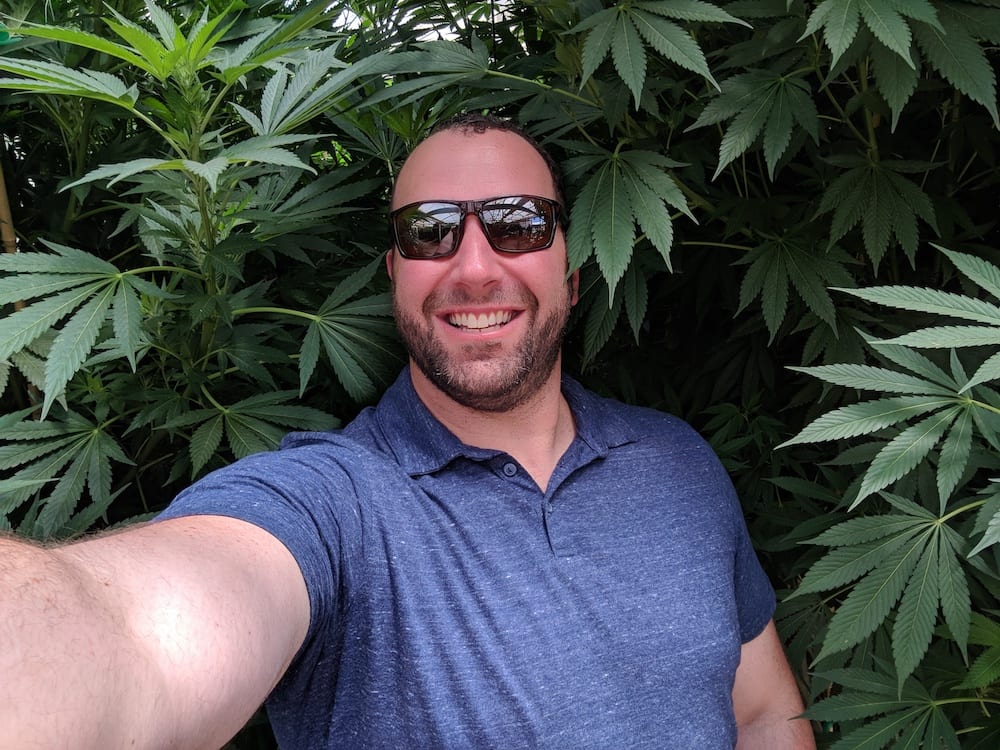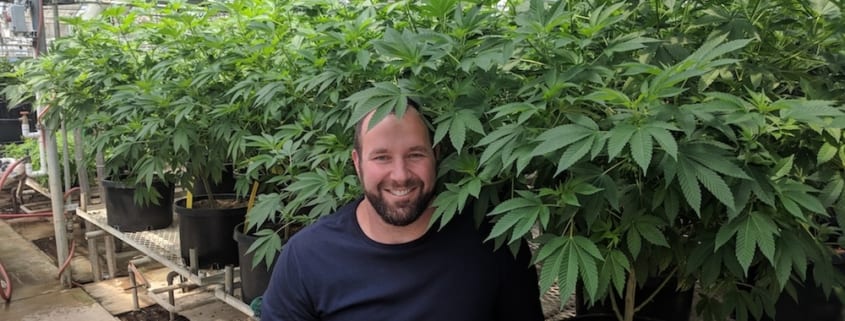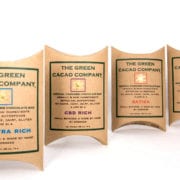Dr. Robb Flannery on Growing Cannabis
We recently welcomed a new advisory board member, Dr. Robb Flannery, CEO of Dr. Robb Farms.
Dr. Robb, aka Robby, brings with him a deep knowledge of cannabis cultivation, so we decided to ask him some questions on behalf of all the home growers and wannabe home growers out there.
What does it mean to have a PhD in cannabis? How has your education and research prepared you for your current role running Dr. Robb Farms?
Well, my PhD is in Plant Biology with an emphasis in environmental horticulture and a specific expertise in hydroponic crop optimization for cut-flower production in controlled environment agriculture from UC Davis (recently voted as the #1 Plant Science school in the U.S.; #2 in the world). There aren’t too many whole plant physiologists out there, and there are even fewer whole plant physiologists out there with expertise in hydroponic optimization for cut-flowers. Basically my degree is a fancy way of saying I know how to optimize production in cut-flower production, which is all that cannabis production is. Cut-flower production.
Those 3 letters behind my name have opened doors that typically would not be open for me. Additionally, it has taught me humility. There’s an old adage that relates to a student’s transition from undergrad to graduate level studies. It goes along the lines of: “When you graduate with a bachelor’s degree, you think you know everything. When you start a PhD, you learn you know nothing.” Earning a PhD can be a very humbling experience. I definitely am aware of my weaknesses and have become comfortable with them.
Although my PhD instilled a sense of humility in me, it has also allowed for me to see through hogwash when it comes to the science or operational side of the industry rather quickly. Unfortunately, we are seeing quite a bit of that at this point in time.
What’s the most important piece of advice for starting out in cannabis cultivation?
Have you ever seen the Pixar film Ratatouille? In the movie there’s a character who always said that anyone can cook. This is so true. All you really have to do is give it a shot. Cannabis cultivation is no different. I often times relate horticulture to the culinary arts as well. Cultivating at home is like cooking at home. You’ll need some equipment, but ultimately it takes a little bit of know how and a lot of trial and error. Anyone can do it as long as you’re willing to put in the time. Cannabis is just another recipe in the cookbook.
Having said that, there’s a big difference in making Kraft Mac N Cheese from the box vs. making Mac N Cheese from scratch with high quality ingredients. One of those takes a lot more time, experience, know-how; however, the end result is worth it! There’s nothing wrong with Kraft Mac N Cheese, but sometimes you want that gourmet food. That’s what I specialize in. It just takes training and experience though.
Did you start growing cannabis at home before you switched to commercial cultivation? What was your experience like?
No. I started on the large scale. I was trained and grew up in that type of environment. As for growing at home in general, I have been doing that since I was very young. My grandfather and father were always tinkering in the garden with growing our own food. My grandfather on my mother’s side grew up on the island of Malta. If you know anything about Malta, it’s a couple of islands in the middle of the Mediterranean Sea.
Growing your own food is a part of life there. I was always in my grandfather’s backyard “helping” him tend to his plants and animals. I say “helping” with quotation marks because I started very young and I’m sure I was more of a burden for him at the time than I was a benefit to him, but I learned a love for horticulture as a kid. My father also always had an interest in growing food for us to eat.
Cannabis is just another recipe for the garden. I definitely grow at home nowadays as it is part of my love for growing as much as I can for fun and for sustenance. Also, I think it’s a particularly beautiful plant.

Where can folks go to learn about rules around home cultivation in their state?
That all depends on the state really. I can speak for California though. In California, if you are an adult, you can grow up to six plants. If there are two adults in your household, that means you can grow up to 12 plants.
Now, there are some local municipalities that have ordinances that forbid outdoor cultivation. However, even in those jurisdictions, you can cultivate cannabis indoors or in a protected environment away from public view. No local jurisdiction in California can disallow the cultivation of cannabis indoors. This is perfect for hydroponic production, by the way.
What’s the difference between cultivating for the flower and cultivating to juice it?
There are many, many ways to consume cannabis. Traditionally, humans have cultivated cannabis for the female flowers. The female flowers are where the plant concentrates the terpenes and cannabinoids that we all enjoy. The flowers are what you smoke or vape with. This has been the primary method of getting THC and CBD into your body.
It is important to note that the cannabis plant actually does not make THC nor CBD. The plants produce THCA and CBDA. These are the “non-active” and “non-psychoactive” forms of the cannabinoids. The “A” stands for acid, and there’s a carboxylic acid attached to that THC and CBD. In order to activate the cannabinoids, one can simply heat up the acid forms of the cannabinoids (for example smoke or vape or cook). However, the acid forms of the cannabinoids also have significant health benefits.
For example, THCA is 20 times the anti-inflammatory as aspirin and twice the anti-inflammatory as hydrocortisone. It is also a rather potent anti-oxidant. So there is value in consuming these cannabinoids in their “non-active” forms. That’s where juicing cannabis comes in to play. You can juice cannabis much like you would go into a Jamba Juice and order a wheat grass shot. You get access to all the beneficial terpenes and cannabinoids without getting high. And because you’re not getting high, you can take very large doses of these compounds without becoming “over-medicated.” It’s honestly an interesting method of consuming cannabis that absolutely has health benefits.
What’s the time and financial investment if folks want to maintain a successful home grow?
This really depends on whether you want to make Kraft Mac N Cheese or Mac N Cheese from scratch with high-end ingredients. So the range can be rather large. You can plant some cannabis in your backyard and not touch the plants until it’s time to harvest. Maybe you throw a little fertilizer here and there on it. Or you can go all in and invest in a several thousand dollar aeroponic system that automatically monitors the abiotic, environmental factors around the plant.
Cannabis cultivation does not have to be that difficult though, and growing hydroponically is actually a lot easier than a lot of people think. If you’re growing in a growing medium that is not soil, you are already growing hydroponically. Buying potting mix from your local garden center is likely your first step into growing hydroponically.
You’ve probably already grown hydroponically without even realizing it. This means that you can get some pots filled with potting mix, get some fertilizer, and set up an automatic irrigation system for your cannabis plants rather inexpensively ($30-50). Ultimately, the best thing you can do for your plant is give it plenty of sunlight and hopefully some dry air (cannabis is susceptible to fungal infection, so dry air helps prevent fungal spore germination; additionally, dry air promotes cannabinoid and terpene production in the plant). It really doesn’t need to be too complex to have fun in the garden with cannabis.
Keep cultivating!








 Photo by
Photo by 

